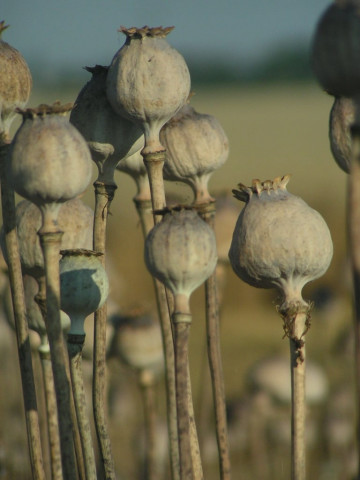High on the mountains: The Lotus-eaters of Broghil Valley
The addiction has spread like wildfire, reducing the number of resources devoted to education and health .

Hard-earned money in Broghil Valley is being spent on opium. Be it a hard to kick addiction or momentary recreational choice, the practice has raised concerns over deteriorating health and education standards in the area.
Broghil Valley is situated some 280 kilometres north of Chitral district headquarters on the foothills of Pamir mountain.
Surrounded by high mountains and grassy plains, the valley has been largely disconnected from the rest of the country. People here find it difficult to scrape together a living.
Whatever little the people manage to earn is not always spent on bare essentials, but on opium, while access to health care and education take a back seat.
Fatal addiction
“There are about 240 households in Kishmanja, Khoi, Garam Chashma, Iskharwaz, Chilmarabad, Shwasar and Karambar villages of the valley,” Naik Bakht Shah, a resident of Chaikar village, told The Express Tribune. “Nearly 180 men and 60 women are addicted to opium,” said Shah who is also an opium addict.
“This addiction has squeezed me dry,” he said, “I don’t have any money left. And yet, it is difficult to overcome. It has become an old habit and I hope I can summon the strength to deal with this problem soon.”
According to Shah, a tola (11 grammes) of opium costs Rs1,000 in Broghil and lasts for about three days.
Some families consume more than one tola on a daily basis. The locals have already put a figure to the financial losses. According to estimates, opium consumption in Broghil Valley costs Rs72,000 per day, Rs2.1 million per month and Rs25 million per year.
Away from school
Opium consumption has spread like wildfire across the valley and reduced the number of resources devoted to education.
Moreover, not many families in the valley send their children to school. Most children tend cattle which is an important source of income. Zareena Begum, a student of Class nine from Chikar village, is the only girl from her village who is enrolled. There are 40 families in her village who do not send their children to school.
Most people have sent their children away to be educated. Zareena Begum has been sent to live with her relatives some 70 kilometres away from her native town for schooling. Similarly, Dad Khuda, a boy from Chilmarabad village, stays with a host family in Gojal, Gilgit which bear his school expenses.
Health risk
While a majority of people in the valley are addicted to opium, some have been adversely affected by the fumes. The consumption of the drug has been a source of discomfort and triggered health hazards in the valley.
Morek Begum, a resident of the Broghil Valley, said the addiction coupled with the poisonous fumes of dried grass used for cooking has caused health problems. As a result, the local population has aged prematurely and suffers from asthma and various eye disorders, she said.
Way of life
According to the valley residents, opium is mainly smuggled from Afghanistan. The addicts use a special lamp to burn the opium and then inhale its fumes through a pipe.
Addiction in the region dates back to when Chitral was a princely state and the practice was officially promoted.
After the creation of Pakistan, the government set up opium depots to institutionalise the addiction and make it a viable source of income, according to locals. This has resulted in the economic and psychological destruction of the community.
Over time, opium addiction has diverted attention away from cattle rearing, which is the mainstay of the local economy. Some locals insist they have no other recourse except the opium-induced hibernation.
For the most part of a year, the area is covered with snow and it is difficult to do anything else. As a result, boredom and the absence of recreation serve to augment their addiction.
Published in The Express Tribune, September 29th, 2014.



















COMMENTS
Comments are moderated and generally will be posted if they are on-topic and not abusive.
For more information, please see our Comments FAQ